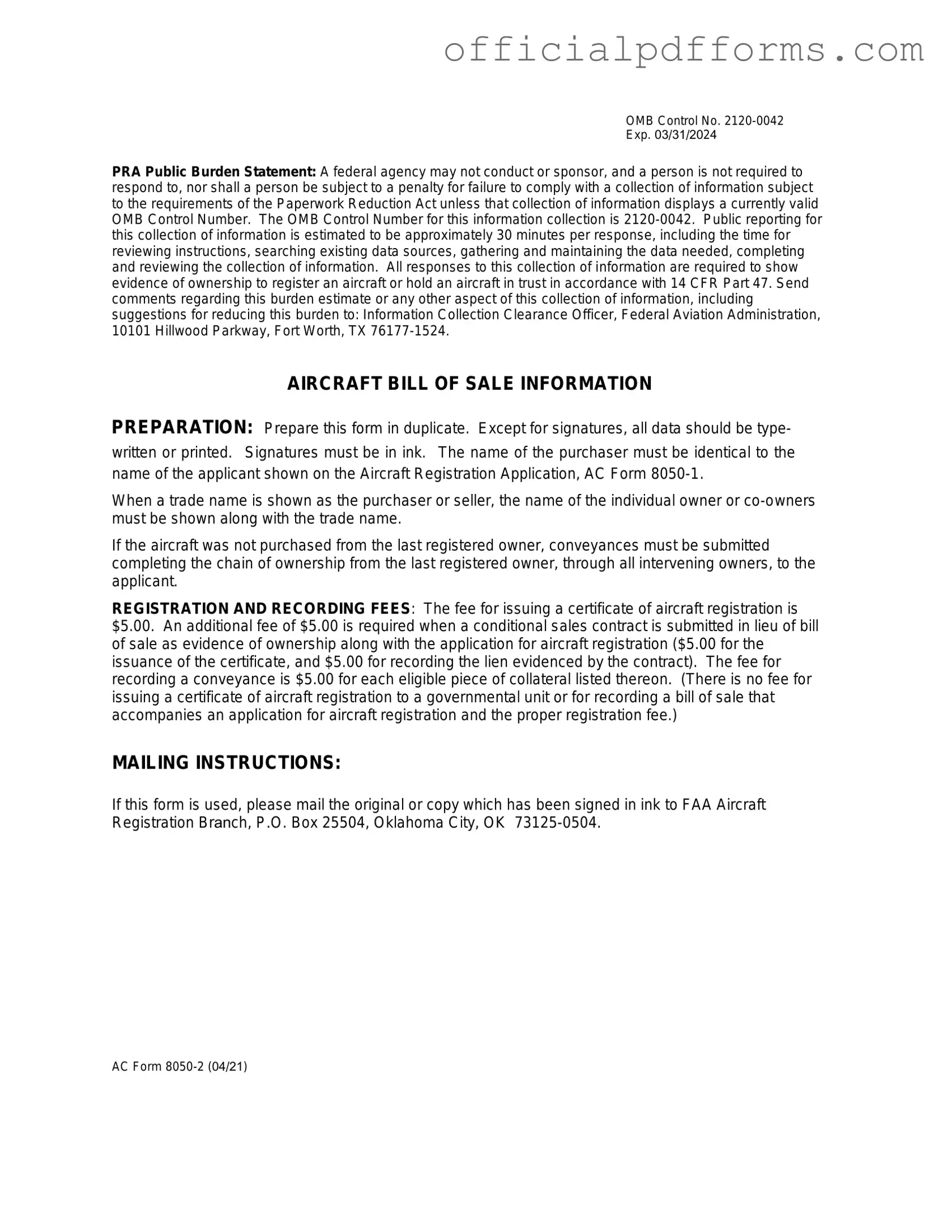The Aircraft Bill of Sale AC 8050-2 form is a legal document used to transfer ownership of an aircraft from one party to another. This form serves as proof of the sale and outlines the details of the transaction, including the buyer, seller, aircraft description, and sale price. It is essential for registering the aircraft with the Federal Aviation Administration (FAA).
Both the seller and the buyer of the aircraft need to complete the AC 8050-2 form. The seller provides the necessary information to confirm the transfer of ownership, while the buyer must ensure that the details are accurate for future registration purposes.
The form requires several key pieces of information, including:
-
The names and addresses of both the buyer and the seller.
-
The aircraft's make, model, and serial number.
-
The sale price of the aircraft.
-
The date of the transaction.
Completing this information accurately is crucial to avoid any issues during the registration process.
While there is no fee for submitting the Aircraft Bill of Sale AC 8050-2 form itself, you may incur fees for registering the aircraft with the FAA. These fees can vary based on the type of aircraft and the specific services requested during the registration process.
The completed AC 8050-2 form can be submitted to the FAA either by mail or electronically, depending on your preference. If mailing, send it to the appropriate FAA Aircraft Registration Branch. For electronic submissions, ensure you follow the guidelines set by the FAA for electronic filing.
A notary is not required for the AC 8050-2 form itself. However, having the signatures notarized can provide an additional layer of authenticity and may be beneficial if disputes arise in the future. It’s always a good practice to consult with a legal advisor if you have concerns.
Can I use a different bill of sale for my aircraft?
While you may find other templates or forms online, the AC 8050-2 form is the standard document recognized by the FAA for aircraft ownership transfer. Using this specific form ensures that your transaction complies with federal regulations and simplifies the registration process.
Once submitted, the FAA will process your form and update their records to reflect the new ownership. You should receive a confirmation of the registration change. Keep a copy of the AC 8050-2 form for your records, as it serves as proof of ownership.
You can easily obtain a copy of the Aircraft Bill of Sale AC 8050-2 form from the FAA's official website. The form is available for download in PDF format, making it accessible for printing and filling out as needed.
If you discover an error after submitting the form, contact the FAA as soon as possible. They will guide you on the steps to correct the mistake, which may involve submitting a new form or providing additional documentation to rectify the issue.
